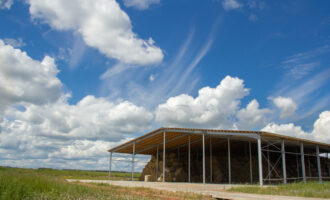Earlier this week King Charles III delivered the Labour governments plans to ‘Get Britain Building’, a priority area for the new leader in Downing Street – but with a huge number of abandoned viable buildings, are we not better off refurbishing rather than building new? Ben Cussons, Business Advisory Partner and Property & Construction lead explores the topic.
According to the Office for National Statistics, the population of the UK is projected to increase by 9.9% over 15 years from 67 million in mid-2021 to 73.7 million in mid-2036. To accommodate this the UK government estimate that at least 300,000 new homes are needed each year.
From the latest figures published by Inside Housing in the year to 31 December 2023, construction began on 148,930 new homes (16% down from the 2022 figure of 178,110) and new build completions stood at 158,190 (11% down from 2022 which was 177,810), someway short of the 300,000 needed.
So where is it all going wrong?
Well, if it was just one reason it would be easier to solve, but with a combination of lack of suitable sites for development, costs to finance a development being at the highest they have been for over 15 years, fear of a housing market crash, burden of government red tape and a lack of developers ready to build, there is a bit to sort.
Some big changes need to be made as we currently have a huge number of disused commercial buildings in vacated industrial units and empty retail/leisure units throughout the UK on our high streets. Arguably, we have enough space to build but these types of developments seem to be the exception rather than the norm.
With the news constantly reporting of a housing crisis and no sign of improvement on the horizon, is now not the time to be looking at alternative solutions for housing rather than building on more of our countryside? Shouldn’t converting empty office and commercial space to residential living be part of the solution?
Similarly, if we have more people living in the centre of our towns and cities, surely communities will rebuild, and these centres will become a hive of activity once more. To quote the famous line from the film Field of Dreams, “build it and they will come.” Maybe I am living in a dreamworld, but it could, and I think should, also become a reality.
Maybe one day the ‘old ways of working’ 5 days in the office will return and these spaces in town and city centres will return to what they once were, but whilst we are adapting to the hybrid working model, they sit empty and should be looked upon as opportunities rather than a burden. Additionally with the new Biodiversity Net Gain legislation (BNG) in place, converting something that is an existing commercial building into new residential will make meeting the requirements a lot easier.
In theory it sounds easy, but as we all know, property development is fraught with risk and even the smallest self-build is putting a considerable sum of money on the line and natural for developers to look at the more secure option when appraising which developments are viable.
Is building new safer?
A client I have been working with has been carrying out a stunning conversion of a former leisure establishment into five high end apartments and whilst the results are quite spectacular the project has been rife with obstacles and unforeseen challenges to overcome. In his words, “never again, give me a standard new build any day of the week!”
I recently joined the inaugural ICAEW East of England Construction and Real Estate insight group and this was also a common theme amongst the attendees.
So, if new build residential is still viewed as the safer option rather than conversion of existing and is the developer’s preference we need to look at some of the barriers to such developments and how we overcome them:
- Cost – this is perhaps the biggest obstacle. A simple new build house can be estimated with greater certainty as it is tried and tested. Typically, the costs for a new build will fit within the industries standard range whereas repurposing an existing, you don’t know what you will uncover meaning you cannot reasonably estimate costs with the same degree of certainty.
- Lack of experience – much like with cost it is the fear of the unknown and lack of experience in overcoming it which puts people off here, in addition to the non-existence of trade skills in the labour force. A lot of tradespeople nowadays are not able to lend their hands to differing trades as they do what they are trained in well. So is the fear of the unknown putting developers off?
- Planning process – local authorities do not allow the conversion of commercial buildings to residential easily and there must be a just case that these units are not required for businesses. It is not uncommon for a developer to purchase a suitable unit to then be told that they have to market and demonstrate that it is not a viable business unit before planning is granted. This would normally be for a minimum period of one year, all the whilst the building needs maintaining, and any financing used to purchase servicing.
With these obstacles, what needs to be done to overcome this?
Government incentives to help fund such conversions? Relaxed planning applications for specified developments to speed up the process? Or local authority projects put out to tender for construction phase only?
Only time will tell if Labour’s plans will get Britain’s property and construction sector back on track and encourage further development of new and existing buildings.
If you would like to discuss any of the changes or topics raised in this article, please reach out to Ben Cussons by calling 0330 058 6559 or emailing hello@scruttonbland.co.uk







